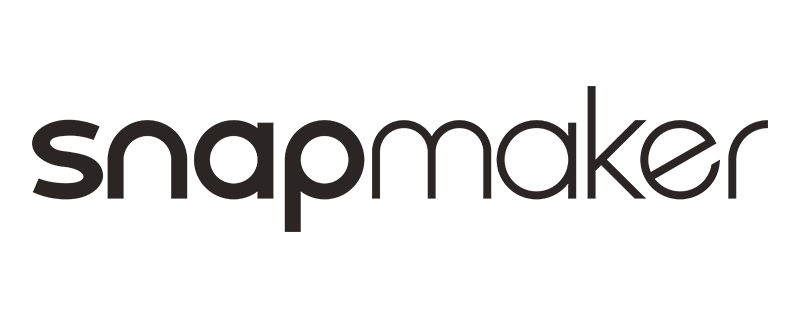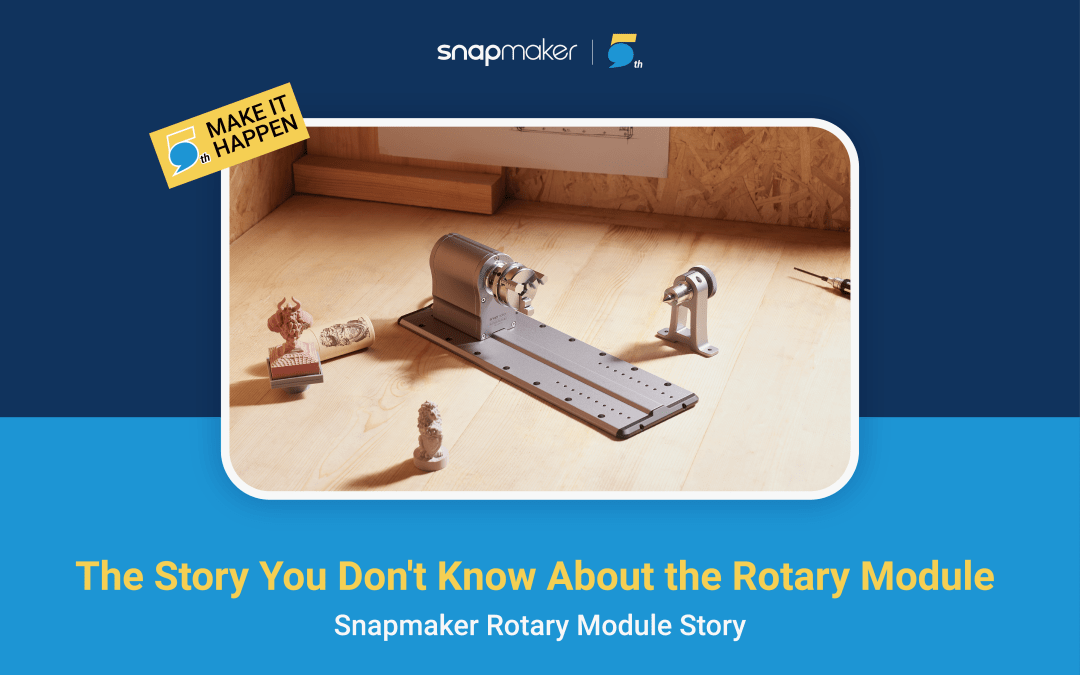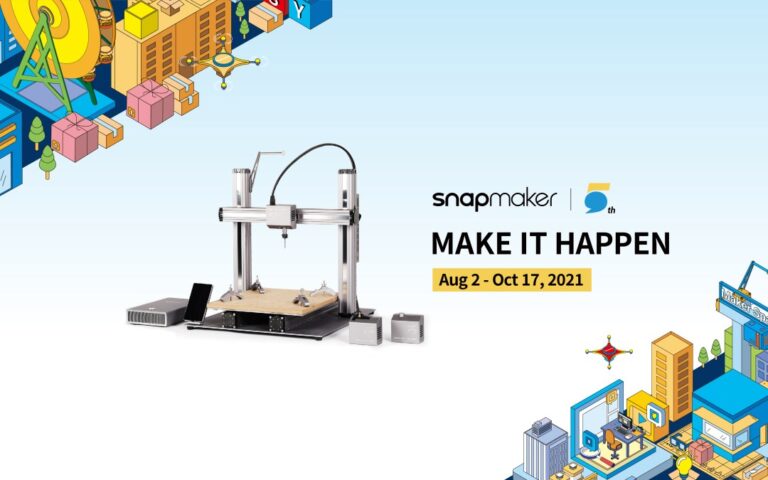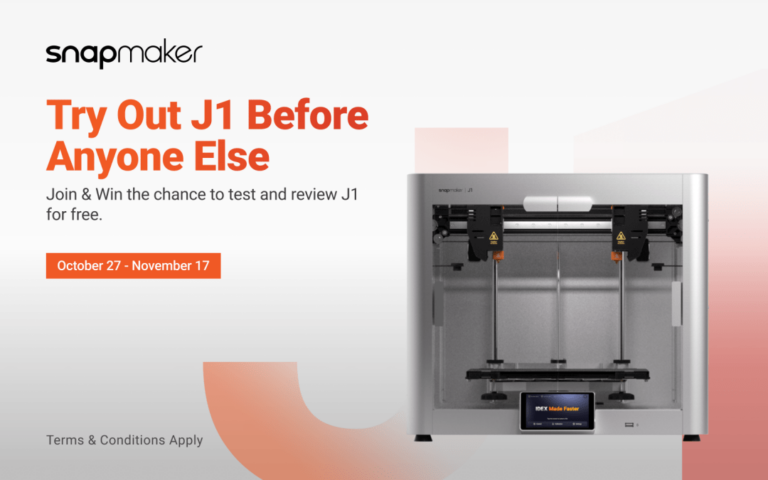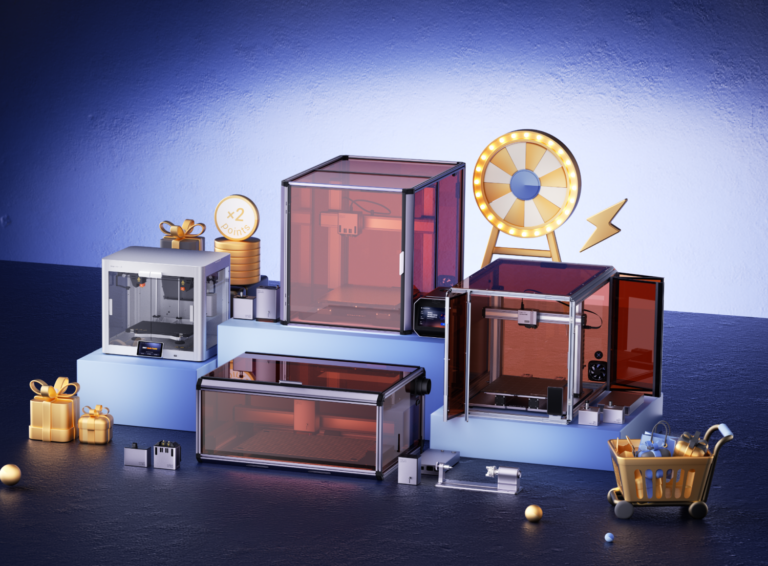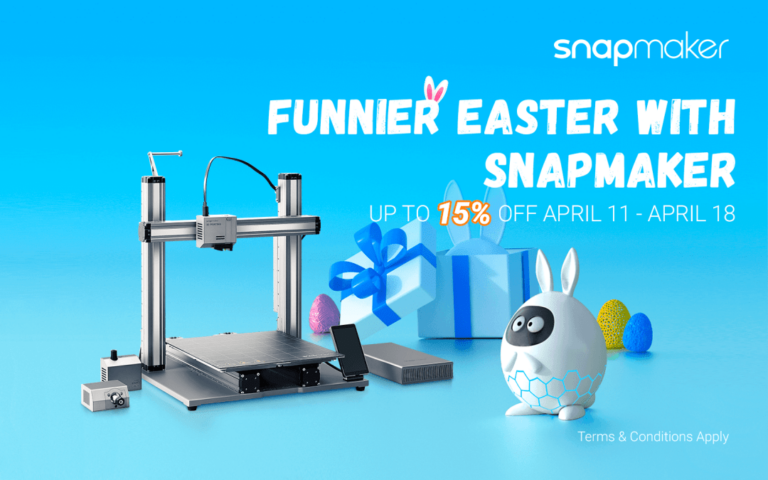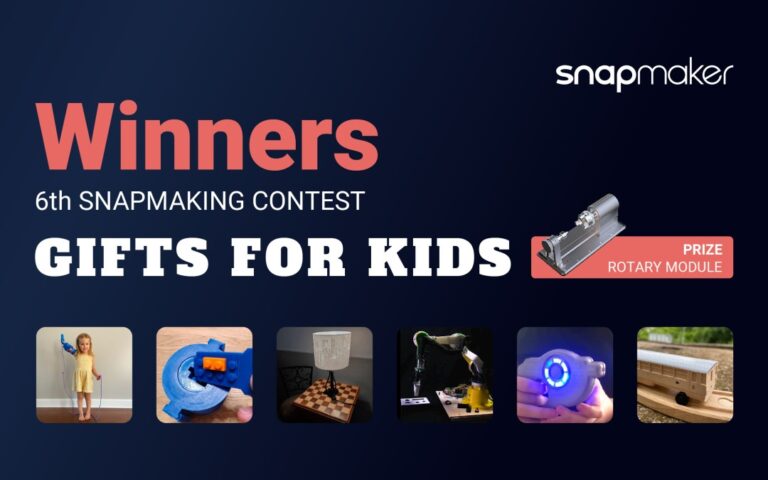Snapmaker Feature Story | The Story You Don’t Know About the Rotary Module
Hi makers,
Since launching the “Make It Happen” Snapmaker 5th-anniversary celebration campaign, we’ve received boosting engagement and sweet birthday blessings on social media.
As part of the campaign, we’ve also shared the stories of our past five years on our featured website. However, there are a lot more stories during the years, not just about the company, but also about our products, users, and partners. On this special occasion, we would like to reveal the stories behind and introduce our new blog channel: Make It Happen | The Snapmaker Feature Story.

To begin with, we’re looking into one of our innovative products, the Rotary Module today, and uncover the journey of how our team brought it to life. Designed for mid-advanced DIY makers, 3D model designers, and technical engineers, the Snapmaker Rotary Module is a handy attachment compatible with Snapmaker 2.0 A250 and A350 that brings you an extraordinary desktop 4-axis CNC machining and laser engraving experience. Get on board, makers!
Make Connection Happen | Our Motivation
Have you ever noticed or wondered about the lyrics printed on the Rotary Module Quick Start Guide? “If there is a dark Now we shouldn’t doubt, and there is a light, don’t let it go out.”- U2 There is a light.

Well, it’s time to unveil the story behind it. The song was for Douglas McLaren Livingstone and his wife Kathy, one of our Snapmaker’s early backers and StarMakers as well who has always been actively engaging in our Facebook community. Inspired by Doug’s story and the love and effort he put into his work, our designer decided to leave the message for Doug.
Doug is a 67-year-old information technology expert with over 40 years of experience, and a hobbyist maker as well. His story with Snapmaker starts in 2017 when he wanted to build an electric wheelchair for his wife who had suffered from Motor Neurone Disease (MND). Doug designed a headrest for the model wheelchair as part of a Proof-Of-Concept project and printed it out with the Snapmaker Original. The seat operates with servo motors that can rotate and tilt the seat back and legs, while the printed white hinges joining the seat sections are attached to servo motors. For him, the joy of being a maker comes from the whole process to bring ideas alive.
“I could not have made this without the Snapmaker and I just love that I can bring my ideas to life,” said Doug.

With over 40k members in our official forum and Facebook group and over 150k social media followers, the Snapmaker community grows into a bigger family. We cherish the power of our community as a platform to exchange ideas, share knowledge and experience, showcase creative designs, and give feedback on how we can improve our products to better serve our users.
Make Wonders Happen | The Birth of the Rotary Module
Dating back to May 2019, we released the Rotary Module demo at the Snapmaker 2.0 Kickstarter campaign and it was surprisingly welcomed by our backers. Later in June 2019, Tony, a member of our community initiated a poll regarding the most desirable addon on the Facebook group, and the rotary axis was the top pick with 158 votes among all the options, surpassing higher power lasers, and multi-material modules. Other voices on adding a 4-axis attachment have also been popping up at different forums, however, there was no mature desktop 4-axis CNC tool in the market by then.

In February 2020, after shipping out the first batch of Snapmaker 2.0, there’s a heated discussion on whether our team should launch the Rotary Module project. How to define and position the Rotary Module? It’s not for everyone, but for mid-advanced users who want to further hone their making capabilities. Is it gonna be welcomed by the market and worth all the investment we put in? Given the time and resources we have at the moment, should we improve and upgrade Snapmaker 2.0 first, or launch the project? After rounds of large-scale researches and discussions conducted in the following months, to fill the gap in the market for a more powerful 4-axis desktop CNC tool, fulfill our commitment to our users, also to challenge ourselves, the Rotary Module project was officially launched. We decided to take our shot at it, but the new addon was filled with perilous challenges, and it would not be easy.

During the process, the global pandemic struck us in the first quarter of 2020, which greatly affected our supply chain and made it hard to arrange the project’s resources, time, and energy. But fortunately, our team worked together and made it happen. The Rotary Module was unveiled in February 2021 for pre-sales among 800 backers with an over 10% buyer retention rate. With a higher demand for the Rotary Module, we advanced our 1,000-unit-pan for the year and made it available to all users in March and April 2021.

Make Changes Happen | What to Expect
What exactly can you expect from the Rotary Module? What changes can the Rotary Module bring for your creative process?
Unleash Your Creativity with Desktop 4-axis Machining
3-axis is good at processing works with flat surfaces. However, when it comes to curved-surfaced works, it has limits. For example, extra manual operations are required if you’re about to DIY a piece of furniture such as chair feet and drawer handles with a cylindrical or curved structure. 3-axis CNC also limits the material options. That’s why we need to take a step further. The Rotary Module enables a leap 3D machining world by adding one more axis that differentiates itself from other desktop CNC tools in the market.
Ultra-precision Machining with Strain Wave Gearing
The Rotary Module is equipped with a strain wave reducer with a 100:1 rotational speed conversion to convert the power to a lower output speed. This allows the 3-jaw chuck to rotate with a minimum angle of 0.1°. Now, you can carve on uneven and irregular surfaces without missing a step, with a dozen of materials to choose from, including wood, tooling boards, plastic, bamboo, leather, fabric, non-transparent acrylics, and more.

Free 4-axis Snapmaker Luban Software Support
Software that supports 4-axis CNC coding in the current market like Fusion 360, Solidworks CAM, and Vectric Aspire cost hundreds of dollars, yet we developed Snapmaker Luban, a free open source CAM software that allows full control over 3D printing, laser engraving/cutting, and CNC carving capabilities. It is upgraded to support 4-axis CNC carving and laser engraving. In addition, by offering an intelligent, visualized G-code generating workflow, the new version of Snapmaker Luban makes it easier to set up 4-axis machining than ever before.
Intuitive User Experience with Origin Assistant
Though the Rotary Module is fun to play with, concerns have been raised upon its threshold, as rotary carving is known for having a bit of a learning curve that is not as user-friendly to newcomers. Tools like Origin Assistant and Calibration are developed especially for the Rotary Module to set the work origin or calibrate the focal length safely and quickly.
Make Perfection Happen | Behind the Scenes
We are a team of passionate engineers with maker spirits to challenge ourselves in the “predictable future.” We’ve been dedicated to developing easy-to-use, high-quality and cost-effective digital fabrication tools to help users break the boundaries, improve the efficiency of making, and bring a unique making experience.
Go ahead and take an in-depth look at the challenging yet exciting process for developing the Rotary Module.
Core Hardware – Strain Wave Gearing
Compared with the traditional speed reducer mainly applied in 4 axis tools, the strain wave gearing has a relatively small size, higher precision, stronger durability, and longer life expectancy, but is costly as well. During the product development stage, to ensure the accuracy and the quality of the strain wave gearing to make it live up to the highest expectations in durability within budget limits, our hardware team conducted comprehensive researches and testings to find the best components available.

We need to have the axis be well mounted so it can spin and that there be some means of controlling that spin via the G-code program. However, the mounting process is different from the process of mounting a spindle. More specifically, there will be a shaft between the bearings. To sort this out, we have to find a suitable indexer for the Rotary Module which can provide accuracy and reliance. Our hardware team has tested the rotary table worm gear, timing belt, strain wave gearing, and so on. Because of low noise, free-backlash, and high precision, the designer selected strain wave gearing. It offers nearly backlash-free gear reduction, which is perfect for this module.
After 4 times iterative developments of the design of the Rotary Module, it has been tested in real-world situations after 3 pilot productions and validated by satisfactory results in higher precision and life expectancy.
4-axis Software – From Zero to One
When launching the Luban project in the first place, we only managed to achieve the 4-axis 3 linkage that supports regular cylinder carving, which means it’s not possible to carve objects with complicated hollow structures.
Later the product team realized that we needed to make it a real 4-axis linkage that enables a broader carving area perfect for carving irregular and asymmetrical applications like the Eiffel Tower. As our software product manager Ted recalls, “In the beginning, the software team didn’t agree. It’s all unpredictable. We have no idea if we can make it happen, or how long it is going to take, but it’s something that I believe should be done.” To motivate our software engineers, Ted printed out a delicate lion model and put it on his desk, “It’s just a kind reminder, and you know that? All of a sudden inspiration came and our software engineers sorted the problems out step by step.”

Our software engineer revealed that the biggest challenge is developing the 4-axis linkage algorithm from zero to one. “On the one hand, we have few papers to refer to, as most of them are revolved around the 5-axis, available cases are all industrial. On the other hand, no open-source 4-axis software can be found in the market.” Our team learned from the slice algorithm and planned the path of the cutting area.
The week before launching the Rotary Module Luban, Ted spent the whole week working with the testing, product, and UI teams to make sure everything worked just fine.” I remember we ordered three baskets of KFC Fill Up and the pink powders all over our body.” By saying this, he showed us the record of the late-night KFC delivery order.
Make Growth Happen | Share Your Story With Snapmaker
Hope you guys enjoy this peek into the story as much as we enjoyed bringing it all to life. Thanks for encouraging us to push our limits and growing together with us to make something wonderful.
What’s your story with Snapmaker? Welcome to share your stories with Snapmaker about how we all learn and grow together as a community, and for the opportunity to win the limited Gift Box and Snapmaker official online store coupon.
Join the “Make Growth Happen” story-sharing event now!
Ways to Enter
- Facebook-Post to Snapmaker Page, #MakeItHappen #GrowWithSnapmaker
- Instagram-@snapmakerinc , #MakeItHappen #GrowWithSnapmaker
- Twitter-@snapmaker , #MakeItHappen #GrowWithSnapmaker
Rules
1. Subject matter: Your story with Snapmaker
2. Original story
3. Length: 200-400 words
4. Post the story with either pictures or videos
5. Rules for different social media platforms
Evaluation
The Snapmaker team will evaluate the stories to decide the winners, and each member has five votes. The top 5 stories with the most votes will be selected as the Best Story, while the following 10 will receive the lucky prize.
The main criteria are:
• Originality
• Photo/Video Quality
Much love,
Team Snapmaker
